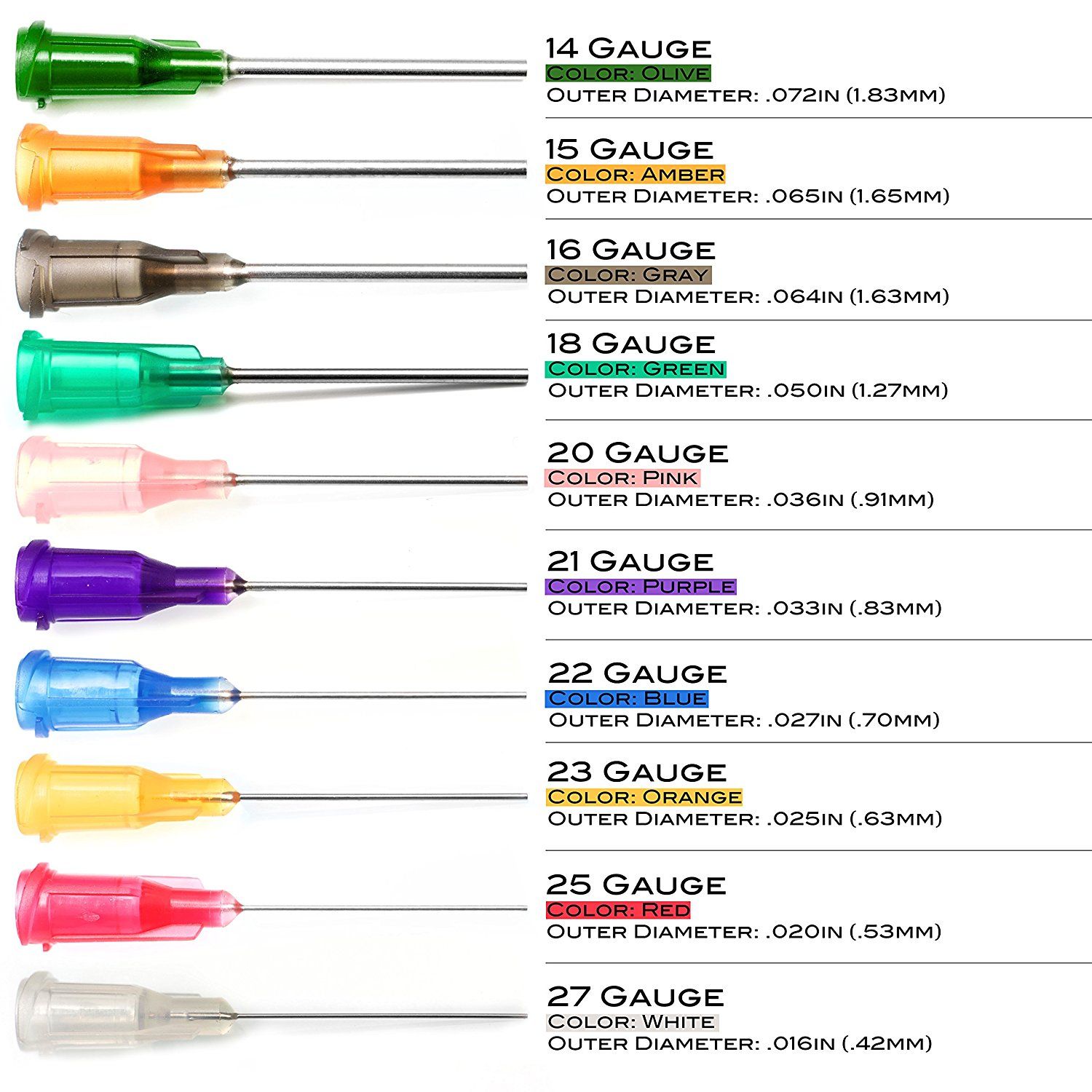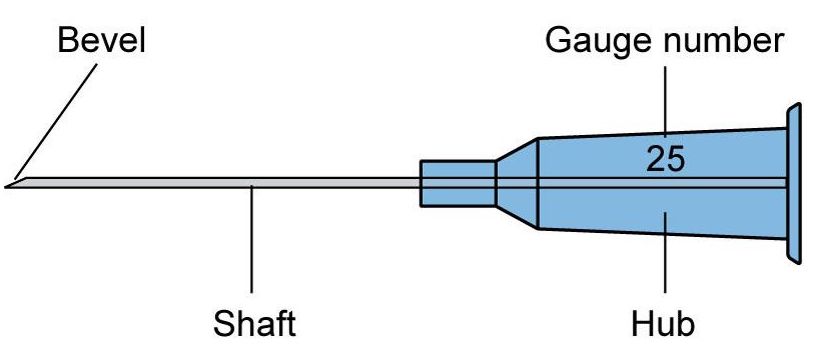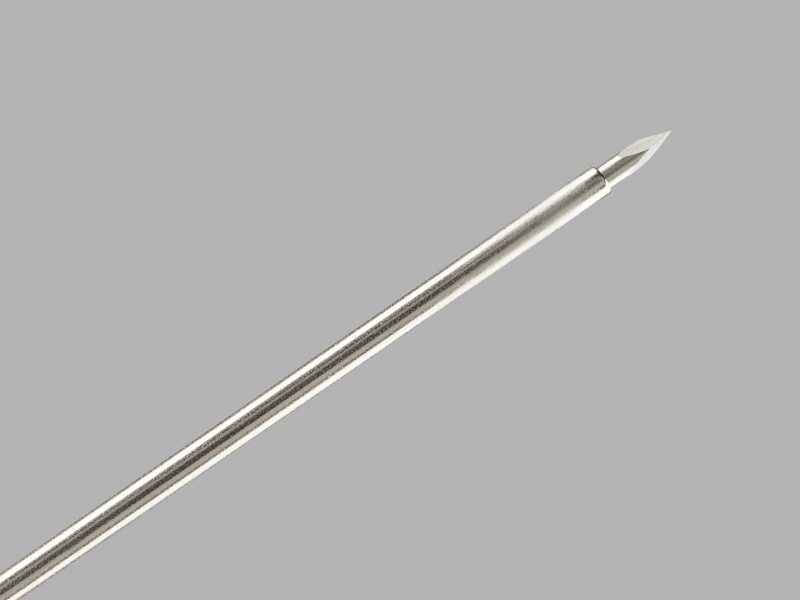OVERVIEW
This page serves as a guide to various types of puncture needles that are used within the field of interventional radiology and provides a framework regarding how to approach thinking about this type of equipment in the field of IR.
NEEDLE DIAMETERS: MEASUREED IN GAUGES
The gauge of a needle refers to its diameter. The lower the gauge the larger the needle diameter (i.e an 18 gauge needle will be larger then a 25 gauge needle). Some important things to remember are:
- A 22 gauge needle is the smallest that can be used for a 0.018 inch diameter wire
- A 18 gauge needle is the smallest that can be used for a 0.035 inch diameter wire
It is important to note that needles are color coordinated to indicate their size.

NEEDLE TIP CHARACTERISTICS:
The nature of the tip of the needle can dictate its utility:
Single walled needles:
These are hollow core needles that do not have anything within their lumen (i.e. no inner cutting needle to fill the lumen). They are beveled at the tip which allows them to be steerable needles.

Trocar Needles:
This refers to a two part needle system with an outer cannula (either beveled or non-beveled) and a removable inner shape three-sided tracer needle. This is not a steerable needle give that it is not hollow.

Page Updated: 08.23.2017